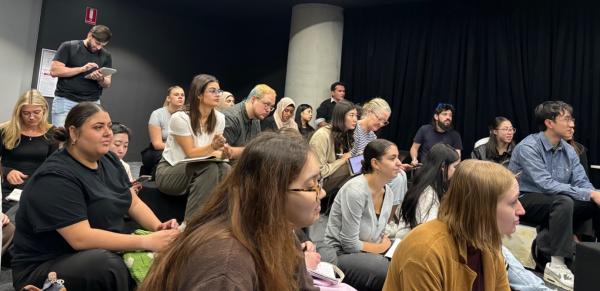Without a doubt, classroom management is one of the greatest challenges for beginner teachers. On March 21, UTS secondary teacher education students visited Inner Sydney High School (ISHS) to explore strategies for cultivating a positive learning environment. The session was led by expert teachers and school leaders Robyn Matthews (Principal), Karen Witherdin (Head Teacher of Teaching and Learning), Nigel Kuan (Head Teacher Science) and Sonya Donohue (English and Teaching and Learning).
ISHS have a visionary approach to classroom management based on the model of a ‘learning rainforest.’ This rainforest metaphor acknowledges how the school community must first establish a positive ecosystem to nurture the growth of its teachers and students. Positive student behaviour thrives within a supportive school community that values the ongoing development of its hardworking teachers.
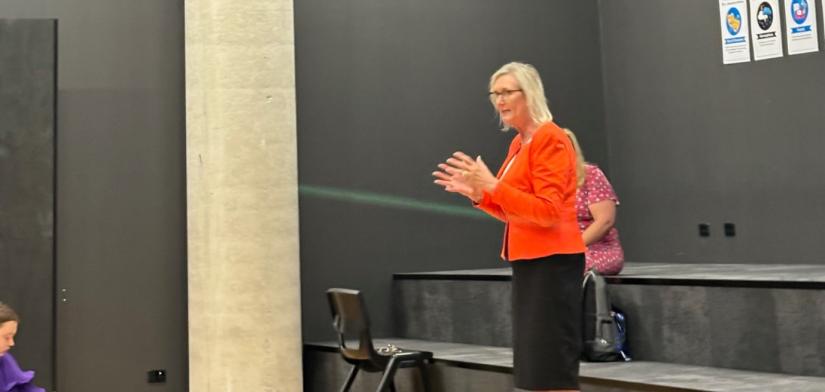
Principal Robyn Matthews welcoming UTS preservice teachers to ISHS
Who you are and your own experiences of schooling determine how you will manage the learning environment.
This was the first message imparted by Karen Witherdin and Nigel Kuan, who shared many colourful experiences that have shaped their teaching journey, as well as their unique management styles. They affirmed how each teacher facilitates positive learning through the prism of their own experiences, reinforcing how effective behaviour management does not look the same in every context.
The day was divided into two main sessions. Nigel Kuan took pre-service teachers through a “macro” approach to behaviour management, discussing the rules and routines that lie at the heart of his practice.
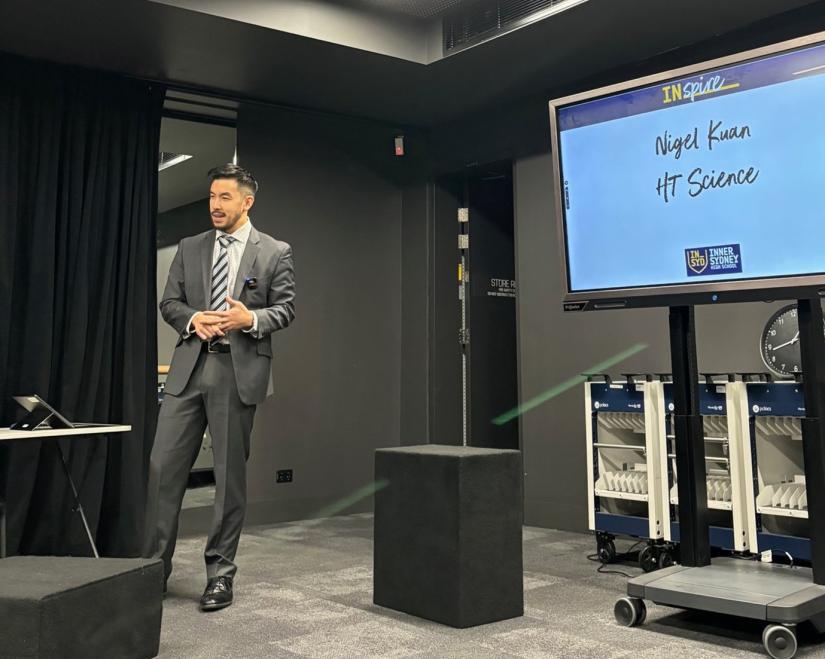
Nigel Kuan’s establishing rules and routines session
When you walk into Nigel’s classroom, you can expect consistency. Students can expect a similar greeting, seating plan, introductory activities, high levels of expectations and a lesson conclusion, which frees them up to simply focus on their learning. He generously unpacks the conscious decisions that underpin his seemingly effortless teaching practice. In his work with beginner teachers, Nigel also promotes the value of ‘scripting’ the language that practitioners can draw on when faced with various tricky classroom management situations.
Next, the “micro” approach was demonstrated by Karen Witherdin and Sonya Donohue, who modelled the dynamic teacher presence that is core to engaging students. They introduced voice modulation, wait time, non-verbal cues, self-belief, and humour as key concepts in developing a vibrant teacher presence.
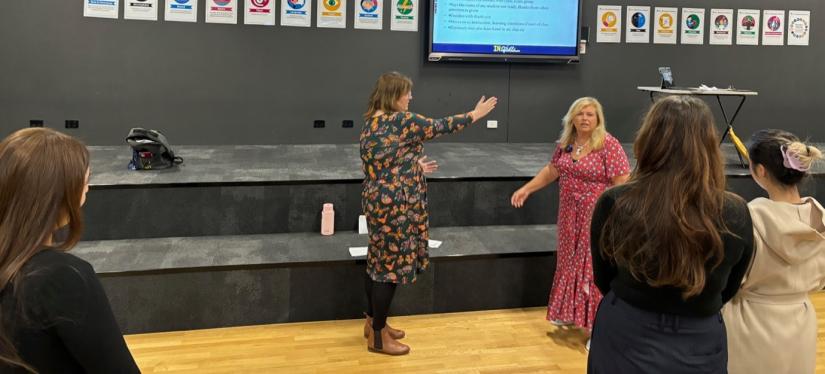
Karen Witherdin and Sonya Donohue acting out a disruptive moment between a teacher and student
“Wait until at least 20 seconds after giving instructions so that students can respond.”
“Stand with your feet at shoulder-distance apart, shoulders back, and with your belly button underneath your spine. You are indicating through your stance, that you are ready to teach.”
“Even though you feel the rise, pretend that you have not lost control.”
“Notice good behaviour.”
"Do you want power or authority?"
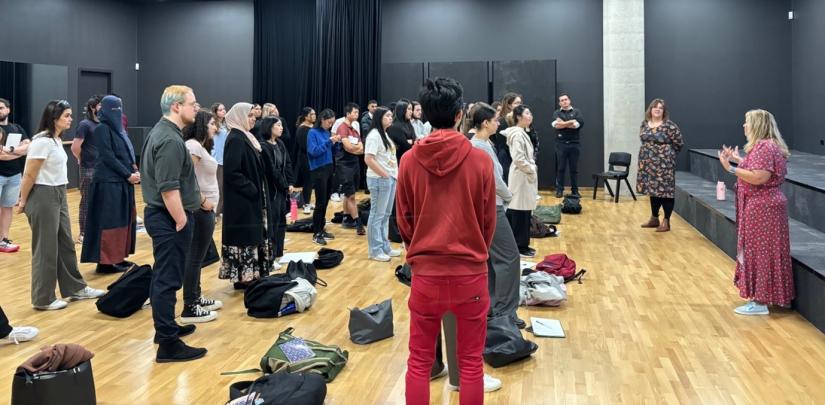
UTS preservice teachers roleplaying classroom management scenarios
The day was full of opportunities to rehearse and role-play different classroom management scenarios. Learning came alive as pre-service teachers took on the role of defiant students, as well as teachers who could firmly and calmly redirect learners’ behaviour.
Establish unconditional positive regard for students. Let them know that you care too much to accept misbehaviour.
Pushed and challenged to use their bodies and words, UTS preservice teachers learned to extend themselves, taking on the persona of a confident teacher who safeguards their students’ growth. Such transformative teacher training was made possible through UTS’s partnership with the amazing staff at ISHS, who have imparted their secrets of managing a positive learning environment to promote the success of the next generation of teachers.


